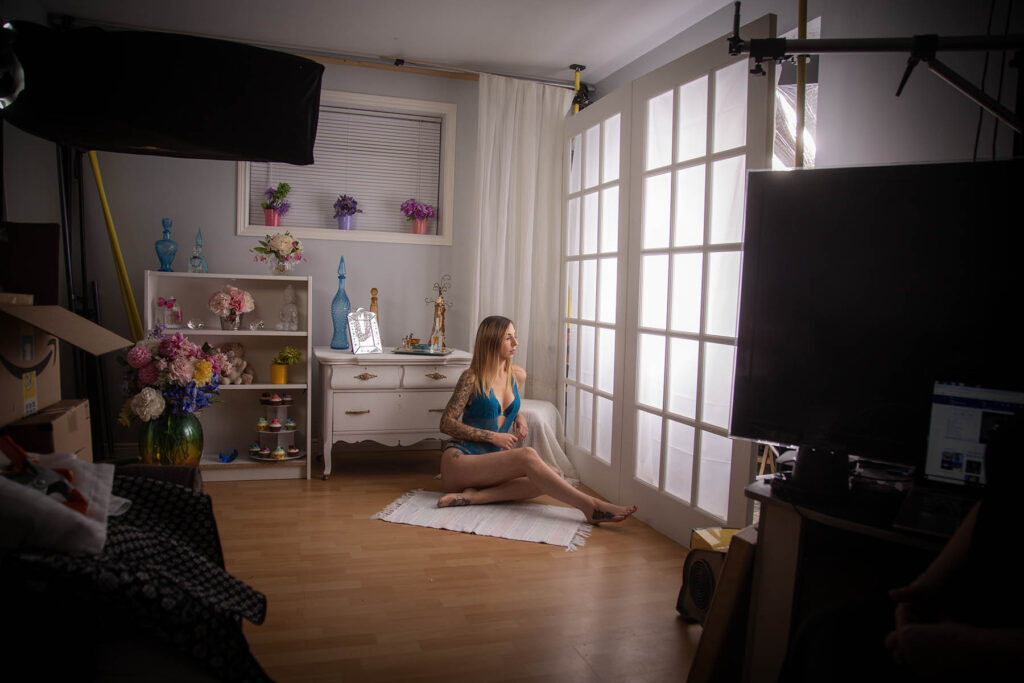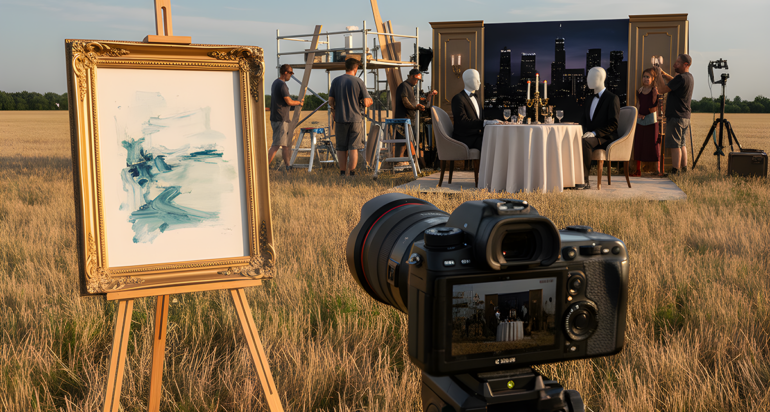Over the past decade, the world of professional photography has undergone a seismic shift. The once-clear line between professional and amateur has blurred. Cameras once cost thousands of dollars and required years of practice to master; now, the average person walks around with one in their pocket. Cell phones, social media filters, and artificial intelligence have not only changed the tools of photography but also changed how people see and use photographs in their daily lives.
Let’s be honest—business is down for many photographers. The wedding market isn’t what it used to be. Family portraits that once filled weekend schedules are now replaced by smartphone selfies. Event photography—once a guaranteed revenue stream—has been swallowed up by a sea of guests snapping away on their phones and instantly uploading to social media.
But this isn’t the end. It’s the beginning of a new creative era. To continue thriving in professional photography, we must evolve—not just in our tools but in our vision. The future belongs to photographers who move from recording events to creating experiences.
From Event Recorder to Scene Creator

A custom built set used for multiple clients over time
Traditionally, photographers captured what was already there. The bride walks down the aisle, the CEO gives a speech, the family gathers for their portrait—all moments that unfold naturally before the lens. The photographer’s skill lay in timing, composition, and lighting—capturing the fleeting second perfectly.
But those “fleeting seconds” are now captured endlessly by anyone with a smartphone. Billions of images are taken every day—well-exposed, even well-composed—by non-photographers. The result? The value of merely recording the moment has plummeted.
So where does that leave the professional photographer?
It leaves us standing at the threshold of a new creative direction—one that transforms the photographer from observer to creator. Instead of just documenting reality, we become the designers of it. Like a cinematographer or an art director on a film set, our work begins long before the shutter clicks. It begins with imagination.
The Art of Creating the Scene
Imagine you’re crafting a short film. The director doesn’t wait to see what happens and then decide to shoot it. They start with a story, a mood, and a message. Then they design every element—the lighting, the wardrobe, the setting—to evoke the feeling they want the audience to experience.
That’s where the professional photographer of tomorrow must go. We must become visual storytellers who build worlds, not just capture them.
A simple portrait becomes a cinematic narrative.
A fashion shoot becomes a character study.
A product photo becomes a miniature world of atmosphere and story.
This is not something the casual phone user can replicate. This requires planning, vision, and craft—the kind of skill that comes from years behind the lens, understanding how light, composition, and emotion intertwine.
When a photographer creates the scene, they control not just what is seen but what is felt. That’s the magic people will pay for.
The New Creative Process: Mood, Message, and Meaning
Every great photograph tells a story. The question is: whose story are you telling?
In the new creative process, we start with three things:
Mood – What do you want people to feel?
Message – What do you want them to understand or believe?
Meaning – Why does this image matter?
Once you’ve defined these, you’re no longer reacting to the scene—you’re designing it. That’s when the mood board comes in.
A mood board is the photographer’s blueprint. It’s a collection of references, colors, emotions, lighting styles, and poses that help visualize the goal. It becomes your guide to building a scene that doesn’t exist yet—but soon will.
Whether you’re working in a studio or on location, the process is the same:
Design the environment that fits your mood.
Select wardrobe, props, and lighting that support your message.
Direct your subject with intention—not just posing, but performing.
Capture the image that tells the story you envisioned.
When done well, you’ve created something extraordinary—an image that exists nowhere else in the world. That’s the kind of work that attracts attention, clients, and admiration. It’s also the kind that cannot be duplicated by a smartphone.
Why This Matters Now
Photography has always been about storytelling, but for too long, we’ve let technology dictate our direction. First came digital cameras, then DSLRs, then mirrorless systems, then smartphones—and now AI image generators. Each innovation pushed photographers to adapt, but too often we’ve been playing defense, not offense.
Now is the time to go on the creative offensive.
The future of professional photography doesn’t lie in faster autofocus or sharper lenses—it lies in ideas. The camera is just the tool; the photographer is the visionary. In a world overflowing with imagery, people crave originality and authenticity. They want images that move them, that make them think, that feel like art rather than documentation.
When you create the scene, you create value—and value is what clients are truly paying for.
Practical Ways to Get Started
Here are a few steps to begin your transition from recorder to creator:
Develop a signature style.
Decide what emotions or themes you want your work to convey. Is it mystery, romance, power, serenity? Build your creative identity around it.
Use a mood board for every project.
Start each shoot with a clear emotional direction. Collect reference images, textures, and tones that define your vision before you even set up your camera.
Collaborate like a filmmaker.
Work with stylists, makeup artists, and designers who can help bring your vision to life. Think of yourself as a director leading a creative team.
Focus on storytelling.
Every photo should say something. Even a simple portrait can tell a story about the person’s strength, vulnerability, or spirit.
Invest in lighting and set design.
Great scene creation often depends on control—control of light, color, and texture. Mastering this is what separates pros from hobbyists.
Market your creativity, not your gear.
Clients don’t hire you for your camera; they hire you for your vision. Show them the kind of stories only you can tell.
Join the Movement
This new direction isn’t about abandoning what photography has been—it’s about expanding what it can be. It’s about embracing imagination as our primary tool and creativity as our competitive edge.
At Photography Schoolhouse, we invite you to join us on this journey of rediscovery. Let’s explore the art of creating scenes, not just recording them. Let’s design images that speak louder than words, that evoke emotion, and that remind people what true photography feels like.
Photography’s next great era begins not with the next camera, but with the next idea.
What kind of worlds will you create?
Your Turn
Put your comments below and share your thoughts on where we’re heading. What excites you about this new creative direction? What challenges do you see? Let’s start the conversation—because the future of photography belongs to those who dare to imagine it first.




Leave a comment